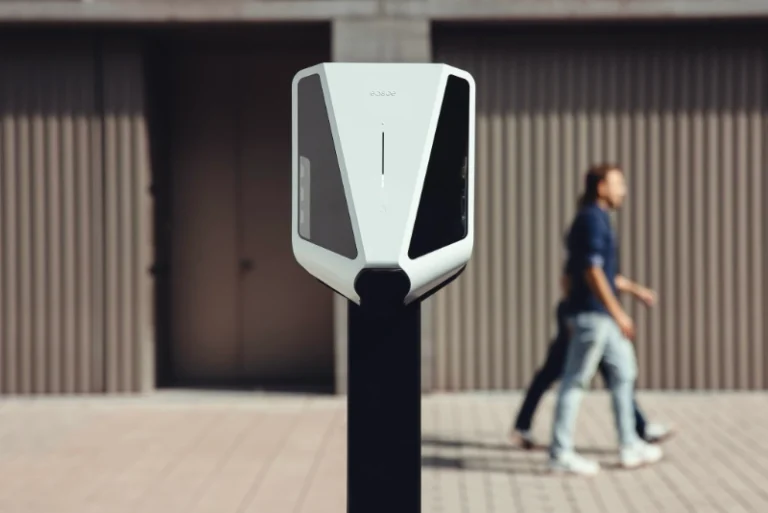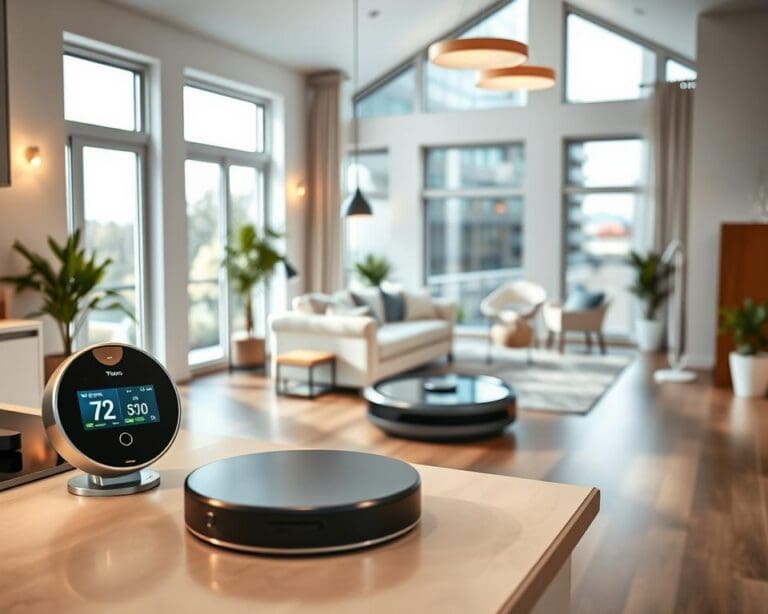In the ever-evolving landscape of maritime security, smart drones are emerging as a powerful tool in the arsenal of port authorities and law enforcement agencies. These unmanned aerial vehicles (UAVs) are revolutionizing the way we approach the safety and protection of bustling port environments, offering a range of capabilities that enhance surveillance, monitoring, and response capabilities.
As the global economy continues to rely on the efficient movement of goods through maritime trade, the importance of securing these vital hubs has never been more crucial. Smart drones, with their advanced technology and adaptability, are proving to be invaluable assets in safeguarding ports against a variety of threats, from criminal activities to natural disasters.
Key Takeaways
- Smart drones provide enhanced aerial surveillance and monitoring capabilities for port security
- Drones can access hard-to-reach areas and cover vast expanses of port facilities
- Advanced sensor technologies on drones, such as thermal imaging and object recognition, enhance threat detection
- Real-time data and analytics from drone-mounted cameras and sensors aid in rapid response and decision-making
- The cost-effective nature of drone-based security solutions makes them an attractive option for port authorities
The Evolution of Maritime Security Through Smart Drone Technology
The maritime security landscape has undergone a significant transformation, driven by the rapid advancements in drone technology. As ports and harbors grapple with the challenges of maritime beveiliging and enhanced haventoezicht, the integration of smart drone solutions has emerged as a game-changer in the evolution of port security.
Traditional Security vs. Drone-Enhanced Protection
Conventional port security measures, such as manual patrols and closed-circuit television (CCTV) monitoring, have long been the standard approach. However, these traditional methods often fall short in terms of coverage, flexibility, and real-time responsiveness. The introduction of technology advancements in the form of autonomous drones has revolutionized the way ports safeguard their perimeters and assets.
Key Technology Milestones in Port Security
The integration of drone technology in port security has witnessed several key milestones over the past decade. From the initial deployment of basic aerial surveillance drones to the subsequent development of sophisticated, AI-powered models, the security evolution in this sector has been both rapid and transformative.
- Advancements in sensor technology have enabled drones to capture high-resolution imagery and video, providing greater situational awareness and threat detection capabilities.
- The integration of thermal imaging and night vision capabilities has expanded the operational capabilities of drones, allowing for round-the-clock monitoring and security surveillance.
- The implementation of automated object recognition and anomaly detection algorithms has empowered drones to autonomously identify potential threats, streamlining the decision-making process for security personnel.
These technological breakthroughs have not only enhanced the effectiveness of port security but have also paved the way for a more proactive and adaptive approach to safeguarding maritime assets and infrastructure.
Understanding Smart Drone Capabilities in Port Surveillance
As the maritime industry continues to evolve, the role of smart drone technology in port security has become increasingly crucial. These versatile, airborne platforms offer a wide range of capabilities that enhance port monitoring and aerial reconnaissance efforts.
Equipped with advanced sensors and imaging systems, smart drones can seamlessly survey vast port areas, providing real-time data and insights to security personnel. Their ability to cover large distances and access hard-to-reach locations makes them invaluable assets for drone surveillance, port monitoring, and aerial reconnaissance operations.
One of the key advantages of smart drones is their adaptability. They can be deployed for a variety of tasks, from perimeter patrols and object detection to thermal imaging and onbemande luchtvaartuigen (unmanned aerial vehicle) tracking. This versatility allows port authorities to tailor their security strategies to address evolving threats and operational needs.
| Smart Drone Capabilities | Operational Benefits |
|---|---|
| Long-range surveillance | Comprehensive monitoring of large port areas |
| Thermal imaging and night vision | Enhanced detection of potential threats in low-light conditions |
| Object recognition and tracking | Improved situational awareness and early threat identification |
| Automated data processing and analysis | Rapid detection and response to security incidents |
By leveraging the capabilities of smart drones, port authorities can enhance their security operations, bolster their response capabilities, and ultimately improve the overall safety and efficiency of their maritime facilities.
Wat maakt slimme drones nuttig voor beveiliging van havens?
The integration of smart drone technology has revolutionized the way ports approach security and surveillance. These advanced aerial systems offer a multitude of benefits that enhance port operations and bolster overall security measures.
Core Benefits for Port Operations
Smart drones provide extended coverage and rapid response times, allowing port authorities to quickly identify and address potential threats. Their aerial vantage point and advanced sensors enable comprehensive monitoring of vast port areas, detecting any suspicious activities or security breaches with greater efficiency.
Cost-Effectiveness Analysis
Compared to traditional security methods, smart drone deployment can be a more cost-effective solution for ports. The initial investment in the technology is often offset by reduced personnel costs, as drones can automate routine patrouillering and surveillance tasks. Additionally, the data collected by these drones can lead to improved operational insights and informed decision-making, ultimately optimizing port security resources.
Implementation Challenges
While the advantages of smart drones are compelling, port authorities may face certain implementation challenges. Integrating the technology with existing security infrastructure, addressing privacy concerns, and ensuring seamless coordination between drone operators and port personnel are some of the key considerations that must be carefully navigated.
By addressing these implementation issues and capitalizing on the core benefits, ports can leverage smart drone technology to enhance their overall security posture and maintain a competitive edge in the evolving maritime landscape.
Real-Time Monitoring and Threat Detection Systems
Integrating smart drone technology into port security operations has revolutionized the way threats are identified and addressed. These aerial surveillance platforms are equipped with advanced real-time monitoring capabilities, enabling security teams to swiftly detect and respond to potential risks.
At the heart of this technology are sophisticated real-time surveillance and threat detection systems. Powered by artificial intelligence and machine learning, these systems analyze live video feeds from drone cameras, continuously scanning for signs of suspicious activity or security breaches.
When a potential threat is identified, the system immediately triggers security alerts, notifying the relevant personnel to take immediate action. This rapid response time is crucial in mitigating the impact of any security incident, allowing for proactive intervention before the situation escalates.
The integration of real-time monitoring and threat detection capabilities has significantly enhanced the overall security posture of modern ports. By leveraging the advanced sensors and analytics capabilities of smart drones, port authorities can now maintain a vigilant watch over their facilities, ensuring the safety and security of both personnel and assets.
| Feature | Benefit |
|---|---|
| Real-time surveillance | Continuous monitoring and early threat detection |
| AI-powered analytics | Enhanced threat identification accuracy |
| Rapid security alerts | Faster incident response and mitigation |
“Smart drones have transformed the way we approach security in our ports. Their real-time monitoring and threat detection capabilities have significantly improved our ability to maintain a safe and secure environment for our operations.”
As port operations continue to evolve, the integration of smart drone technology will remain a critical component in ensuring the resilience and safety of these vital maritime hubs.
Advanced Aerial Surveillance Features for Port Security
As the maritime industry continues to evolve, smart drones are revolutionizing port security by providing advanced aerial surveillance capabilities. Two key technologies that have transformed port monitoring are night vision drones and thermal imaging.
Night Vision and Thermal Imaging
Night vision drones equipped with specialized cameras enable round-the-clock surveillance, allowing security teams to detect potential threats even in complete darkness. These drones leverage infrared technology to identify heat signatures, making them highly effective at visuele inspectie (visual inspection) of the port area.
Complementing night vision, thermal imaging drones can distinguish subtle temperature differences, highlighting areas of interest and aiding in the early detection of suspicious activities. This cutting-edge technology gives port authorities a distinct advantage in maintaining comprehensive security, day or night.
AI-Powered Recognition Systems
The integration of AI recognition systems further enhances the capabilities of smart drones in port security. These advanced algorithms can automatically identify and track objects, people, and vehicles, alerting security personnel to potential threats in real-time. By leveraging machine learning and computer vision, AI-powered drones can quickly analyze vast amounts of surveillance data, streamlining the decision-making process and enabling proactive response strategies.
The synergy of night vision, thermal imaging, and AI-powered recognition empowers port authorities to maintain a vigilant, multifaceted approach to security. These innovative technologies equip smart drones with the tools necessary to safeguard critical maritime infrastructure and ensure the smooth operation of port activities.
Integration of Drones with Existing Security Infrastructure
As the maritime industry embraces the power of smart drone technology, the integration of these innovative tools with existing security infrastructure has become a critical focus. Seamlessly blending drone networks with traditional surveillance systems can unlock a new era of comprehensive, data-driven security integration for port operations.
One of the key challenges lies in establishing robust data sharing protocols that allow drones to communicate seamlessly with other security systems. Developing veiligheidsprotocollen, or safety and security protocols, is essential to ensure the smooth and secure exchange of real-time data from drone-based monitoring and surveillance.
- Integrating drone-captured footage with centralized security monitoring platforms
- Automating threat detection and alert systems through AI-powered analytics
- Synchronizing drone flight paths with ground-based security patrols
By fostering this level of drone networks integration, port authorities can cultivate a holistic, responsive security ecosystem that enhances situational awareness, streamlines decision-making, and ultimately, fortifies the overall safety and resilience of maritime operations.
Data Analysis and Security Intelligence Gathering
Smart drone technology has revolutionized the way port authorities approach security and surveillance. Beyond their visual capabilities, these advanced systems excel at data analysis and security intelligence gathering, providing a comprehensive view of port operations.
Processing Security Footage
The security footage captured by smart drones is meticulously analyzed using powerful algorithms and artificial intelligence. These systems can rapidly sift through vast amounts of video data, identifying patterns, tracking movements, and detecting potential threats in real-time.
Pattern Recognition and Threat Assessment
Smart drones excel at pattern recognition, allowing them to identify suspicious behaviors and anomalies that could indicate security breaches or criminal activities. By continuously monitoring port activities, these systems can assess and classify threats, enabling port authorities to respond swiftly and effectively.
| Data Analysis Capabilities | Security Intelligence Gathering |
|---|---|
|
|
By harnessing the power of data analysis and security intelligence gathering, smart drones enable port authorities to maintain a vigilant, proactive approach to security. This technology empowers them to identify patterns and assess potential threats with unparalleled precision, ensuring the safety and efficiency of port operations.
Environmental Monitoring and Safety Protocols
Smart drones are revolutionizing the way ports monitor their environmental impact and ensure the safety of maritime operations. By leveraging advanced sensor technologies, these aerial platforms provide real-time data on pollution levels, water quality, and other critical environmental factors. Port authorities can now closely track compliance with environmental regulations, allowing them to take swift action to address any issues and maintain a clean, sustainable ecosystem.
In addition to environmental monitoring, smart drones play a crucial role in enhancing overall maritime safety protocols. These versatile systems can assist in search and rescue missions, surveying hazardous areas, and providing visual inspections of infrastructure and vessels. By integrating drones with existing security systems, ports can create a more comprehensive and responsive safety network, ensuring the protection of both personnel and assets.
As the maritime industry continues to prioritize sustainability and safety, the role of smart drones in port operations becomes increasingly invaluable. By seamlessly blending advanced technology with environmental stewardship and risk mitigation, these innovative solutions pave the way for a more secure and eco-friendly future for the world’s ports.








